Awards
Exemplary Ecosystem Initiatives — 2010
Utah: US 6 Wildlife Coordination Committee
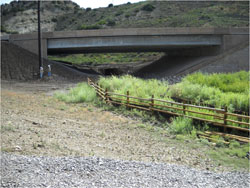
US 6, mile post 203 — After road widening,
box culvert replacement with a bridge.
Source: Wildlife Coordinating Committee
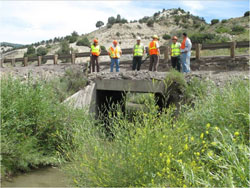
US 6, mile post 203 — Before road widening,
box culvert replacement with a bridge.
Source: Wildlife Coordinating Committee
In 2005, the Federal Highway Administration (FHWA) and the Utah Department of Transportation (UDOT) approved the Final Environmental Impact Statement (FEIS) for 127 miles of planned roadway improvements along US 6. Improvements to US 6 are planned to occur over a 20-year period as funding becomes available for individual roadway projects. Wildlife mitigation efforts will occur project by project until the entire corridor is completed. To help develop these mitigation measures on a project-level basis, a Wildlife Coordination Committee (the Committee) was established. The Committee is able to keep a broad perspective of the entire US 6 corridor while developing individual project mitigation to benefit the ecosystem as a whole.
The Committee comprises individuals from FHWA, UDOT, U.S. Fish and Wildlife Service (FWS), Utah Division of Wildlife Resources (UDWR), the Bureau of Land Management (BLM), Uinta National Forest Service (USFS), and Utah State University (USU). The Committee fosters information sharing and collaboration. It is also charged with the efficient administration of funds set aside for impacts to biological resources.
Since 2005, the Committee has accomplished several wildlife mitigation efforts along the US 6 corridor. They have worked to explore wildlife mitigation options; developed mitigation proposals; and determined the priority of and locations for wildlife crossings, fencing, and escape ramps. As a result of their efforts, there are eight implemented projects that address wildlife needs at a large scale to accommodate habitat linkages and migrations. Collaboration between the participating agencies, as encouraged by the Committee, continues on other unrelated projects.
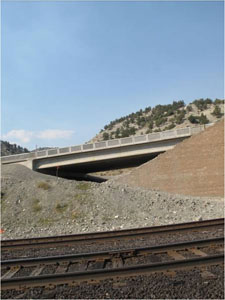
US 6, mile post 200.7 — New Crossing
Source: Wildlife Coordinating Committee
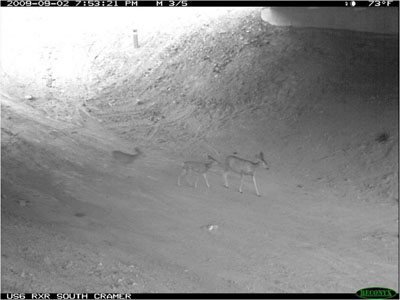
US 6, mile post 200.7 — New Crossing
Source: Wildlife Coordinating Committee
In 2008, UDOT funded a research project with USU to determine the most effective wildlife crossing structures. This research provides the Committee with the ability to base its decisions on scientific data. In coordination with the Committee, UDOT continues to update standard drawings for escape ramps and wildlife fencing.
The Committee continues to be a successful partner in providing input for the roadway projects along US 6. Scientific research and the installation of new wildlife crossings have resulted in fewer vehicle-wildlife collisions. The Committee is also gaining additional support from wildlife organizations.
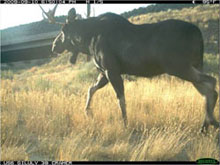
US 6 Gilluley Bridge
Source: Wildlife Coordinating Committee
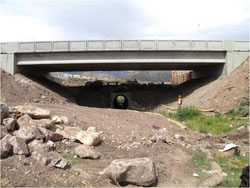
US 6 at Beaver Creek
Source: Wildlife Coordinating Committee
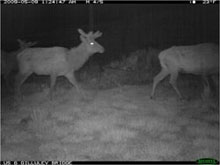
US 6 Gilluley Bridge
Source: Wildlife Coordinating Committee
For more information, contact Rebecka Stromness, UDOT, Environmental Division, at rstromness@utah.gov.

